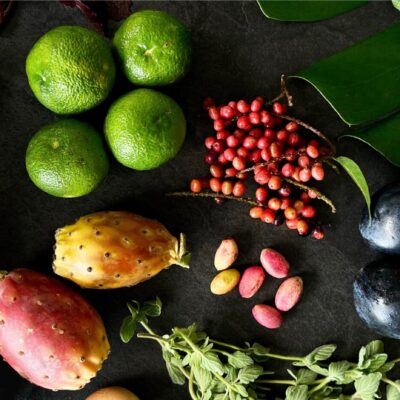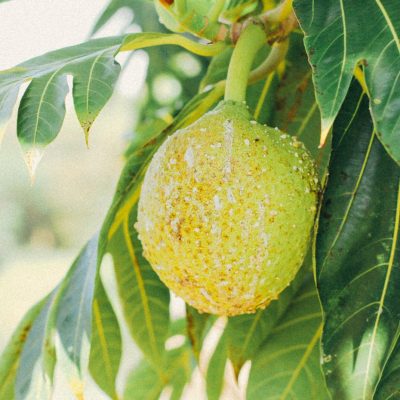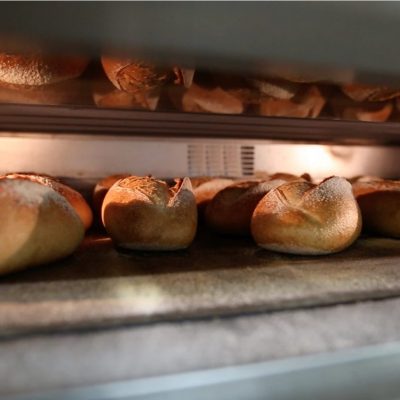Pine Mushrooms, known as ‘Saffron Milk Caps’, are formally referred to as Lactarius Deliciosus, an authentic species commonly found in Southeast Australia. You can find the fungi hanging out underneath pine trees from late April to June, and August if we’re lucky.
In the early 1900s, pine trees were brought over to Australia from the northern hemisphere with the intention to be used as timber. The primary forest that was set up was unsuccessful, and they realised it had a lot to do with what was on the forest floor, helping the trees grow (or not grow in this instance). Specific material to create the ideal forest floor environment was then brought over, which included an assortment of fungi, and this is when the magic occurred!
But, why was it different the second time around? Well you see, the relationship the pine trees and pine mushrooms share is quite extraordinary. You could say they work a bit like a team. We caught up with mushroom genius Jim Fuller who has been working with fungi for 12 years! Being a chemistry major and chef by trade, he fell into the field of fungi with complete passion and enthusiasm. Currently working at The Organic Mushroom Farm as a Chief Mycotechnical Officer, he has a wealth of knowledge and experience.
“The mushrooms need the tree because the tree provides the sugars through photosynthesis and the mushroom provides a network of very fine filaments that venture far and in between particles of the soil that the roots just can’t do…The mushroom finds micronutrients in the very depleted nutrient soil here as well as water, and the tree provides the sugars.” Jim explained.
“They barter… You got sugar? I got water?”
Pine Mushrooms develop under the ground, drawing nutrients from their host tree for almost a decade before they flower. A massive burst of growth is usually brought on by rain followed with a night of cold weather. When cut with a knife they ooze a ‘saffron’ coloured milky sap, which stains the mushroom a dark green colour over time. Don’t be alarmed, this is not mould and is entirely normal!
Suncoast Fresh went foraging in the Blue Mountains, New South Wales, and for wholesale fruit and veg suppliers, it was basically an adult Easter egg hunt. There is something extremely special about this variety, partly due to their limited availability, but more so due to the entire picking experience. “Foraging has been apart of human survival since the beginning of time and is part of our primitive instincts.” Says Graeme Twine, Suncoast Fresh Director.
The Saffron Milk Caps have an earthy flavour and are visually appealing due to their bright orange colourings, which will make your pee go red! “When you break the mushroom, it breaks like chalk due to their cellular structure that is specific to this gene in the mushroom, and that structure is maintained really well when cooking…although they’re not considered the tastiest mushroom they do impart great characteristics, with a great texture and a wonderful colour.” Says Jim.
Frolicking alongside the Saffron Milk Caps, you may also come across a few other varieties. In the past, we have found Slippery Jacks, a relative of the Porcini mushroom that has pores, not gills, unlike the Saffron Milk Caps. The taste is intense, however, doesn’t tend to deepen when dried like the Porcini. They’re brown on the outer and have a white flesh that goes yellow as the mushroom matures. Living up to its name, you will find that they’re slippery on top and can be quite sticky. Therefore, cooking and preparation can be a lengthier experience.
Mushrooms are an incredible vegetable to cook with, and as a wholesale fruit and veg supplier, we feel extremely fortunate to connect with experts in the field like Jim Fuller. Wild mushrooms like the Saffron Milk Caps and Slippery Jacks are available for commercial distribution, however supply can be limited as they flush sporadically throughout May – July/August. We encourage everyone to go experience mushroom foraging.
Disclaimer:
Please be cautious, as many poisonous mushrooms are considered deadly. It’s advised you forage with someone who has experience. Additionally, there are different regulations surrounding foraging in Australia. Please ensure you are across the necessary information. Permits may be required.





